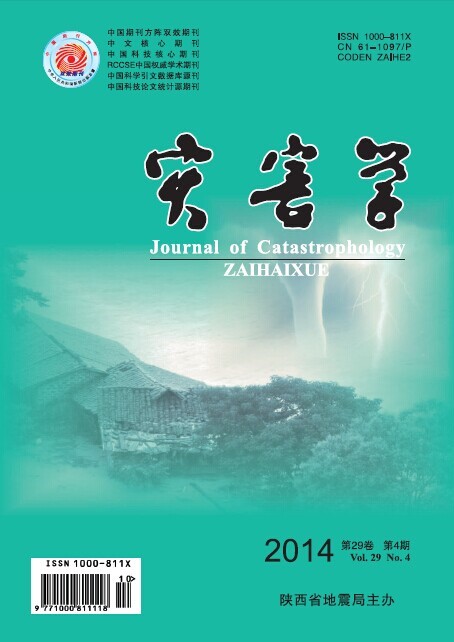萧凌波, 黄欢, 魏柱灯. “华北1743-1744 年与1876-1878 年旱灾中的政府粮食调度与社会后果对比.” 灾害学 27, no 1 (2012): 101-106.
Xiao, Lingbo, Huan Huang, and Zhudeng Wei. 2012. “Comparing Governmental Food Relief and its Impact on Society during the Droughts of 1743-1744 and 1876-1878 in North China.” Journal of Catastrophology 27, no. 1 (2012): 101-106.
 This study by Xiao et al. uses the Qing Shi Lu (清实录, Veritable Records of Qing Dynasty) and other Qing Dynasty sources to compare the famine relief for two droughts that occurred in North China during High and late Qing respectively. It takes into account factors such as climate, drought situation, initiatives from the Qing regime (official cross-regional grain dispatch), and social events (migration and episodes of unrest), therefore providing a more complete account of the conditions and consequences that defined these two events. Researchers who study historical disasters, especially during imperial China, may find this article interesting.
This study by Xiao et al. uses the Qing Shi Lu (清实录, Veritable Records of Qing Dynasty) and other Qing Dynasty sources to compare the famine relief for two droughts that occurred in North China during High and late Qing respectively. It takes into account factors such as climate, drought situation, initiatives from the Qing regime (official cross-regional grain dispatch), and social events (migration and episodes of unrest), therefore providing a more complete account of the conditions and consequences that defined these two events. Researchers who study historical disasters, especially during imperial China, may find this article interesting.
They found that for the drought during High Qing (1743 – 1744), the official food relief measures was efficient, large in quantity, and varied in sources. In contrast, for the drought in Late Qing (1876 – 1878), governmental relief was inefficient and limited in both quantity and sources. The Late Qing drought took place as other structural shifts took place: surpluses from main agricultural areas were dwindling, traffic on the Grand Canal (大运河) was interrupted, and both river transport and the government granary systems were deteriorating. The efficacy of famine relief in this case was further complicated by the limited accessibility of the affected areas: the High Qing drought had affected areas close to the Grand Canal (e.g., Zhili, Shandong); conversely, the Late Qing drought affected regions that were farther away from political and economic centers, and encumbered by natural terrain (e.g., Shanxi, Henan).
Findings from this study are congruent with the historiography on the decline of Qing regime. The regime was weakening in administrative rigor, which affected hydraulic works and maintenance of granary systems and also suffered from a lack of innovation (See for example, Dodgen 1991; Hung 2011; Will 1990; Will and Wong 1991). The confluence of these developments led to the ineffectual official famine relief to the Late Qing drought.
The difference between the social repercussions of the two droughts could not be starker. The Late Qing drought killed close to 23 million people, about a magnitude higher than the High Qing drought. Similarly, while the number of people displaced in the earlier drought was in the ballpark of tens of thousands, the latter drought drove three million to uproot themselves. The latter drought also led to grain theft and eight episodes of mass unrest, while no major episodes of unrest were recorded during the earlier drought.
Wee-Kiat Lim, Research Fellow, Lee Kuan Yew Centre for Innovative Cities, Singapore University of Technology and Design
References
Dodgen, Randall. “Hydraulic evolution and dynastic decline: The Yellow River conservancy, 1796-1855.” Late Imperial China 12, no. 2 (1991):36-63.
Hung, Ho-fung. Protest with Chinese Characteristics: Demonstrations, Riots, and Petitions in Mid-Qing Dynasty. Columnia University Press, 2011.
Will, Pierre-Etienne. Bureaucracy and Famine in Eighteenth-Century China. Standford University Press, 1990.
Will, Pierre-Etienne, and R. Bin Wong. Nourish the People: The State Civilian Granary System in China, 1650-1850. Center for Chinese Studies Publications, 1991.
![[Teach311 + COVID-19] Collective](https://blogs.ntu.edu.sg/teach311/files/2020/04/Banner.jpg)